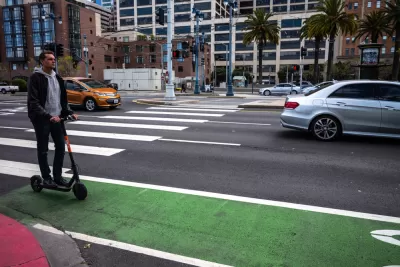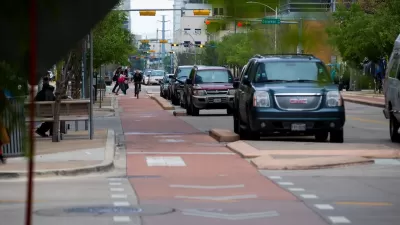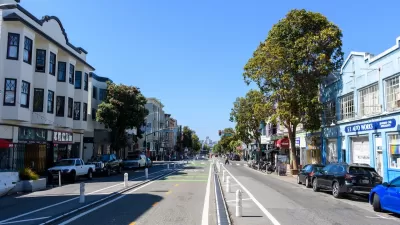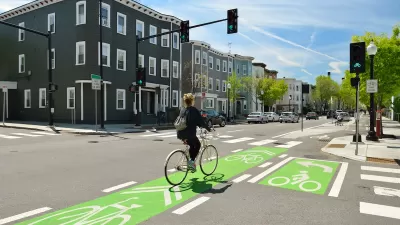With the popularity of electric scooters, it seems like non-automobile travel is gaining a large new constituency. Making room for scooters raises big questions of infrastructure that might not be answered first by nomenclature.

"In a matter of months, electric scooter companies have set up fleets in dozens of American cities," writes Angie Schmitt to raise a big question. "Where do these vehicles belong on our streets?"
"The most logical place for them seems to be bike lanes. That’s how scooter firm Bird sees it — the company wants to help cities build bike lanes so its customers can safely ride in the street without impeding people on sidewalks," according to Schmitt.
But bike lanes are for bikes, and many opponents of bike infrastructure complain about how seldom they are used. But with this new mode taking to the streets and proving very popular, perhaps it's time to completely reframe the bike lane.
Jarrett Walk suggests in a recent blog post that we rethink the different kinds of lanes on the street after carefully considering their defining qualities. The key characteristics to consider: speed and width.
All this came up because I was trying to think of the correct new term for “bike lane” as we proliferate more vehicle types that run more or less at the speed and width of bicycles but are clearly not bicycles, such as electric scooters. The two logical terms seem to be narrow lane or midspeed lane. One way or another the two concepts will need to track with each other.
FULL STORY: Do We Need a New Theory and Name for “Bike Lanes”?

Planetizen Federal Action Tracker
A weekly monitor of how Trump’s orders and actions are impacting planners and planning in America.

Maui's Vacation Rental Debate Turns Ugly
Verbal attacks, misinformation campaigns and fistfights plague a high-stakes debate to convert thousands of vacation rentals into long-term housing.

Restaurant Patios Were a Pandemic Win — Why Were They so Hard to Keep?
Social distancing requirements and changes in travel patterns prompted cities to pilot new uses for street and sidewalk space. Then it got complicated.

In California Battle of Housing vs. Environment, Housing Just Won
A new state law significantly limits the power of CEQA, an environmental review law that served as a powerful tool for blocking new development.

Boulder Eliminates Parking Minimums Citywide
Officials estimate the cost of building a single underground parking space at up to $100,000.

Orange County, Florida Adopts Largest US “Sprawl Repair” Code
The ‘Orange Code’ seeks to rectify decades of sprawl-inducing, car-oriented development.
Urban Design for Planners 1: Software Tools
This six-course series explores essential urban design concepts using open source software and equips planners with the tools they need to participate fully in the urban design process.
Planning for Universal Design
Learn the tools for implementing Universal Design in planning regulations.
Heyer Gruel & Associates PA
JM Goldson LLC
Custer County Colorado
City of Camden Redevelopment Agency
City of Astoria
Transportation Research & Education Center (TREC) at Portland State University
Jefferson Parish Government
Camden Redevelopment Agency
City of Claremont





























